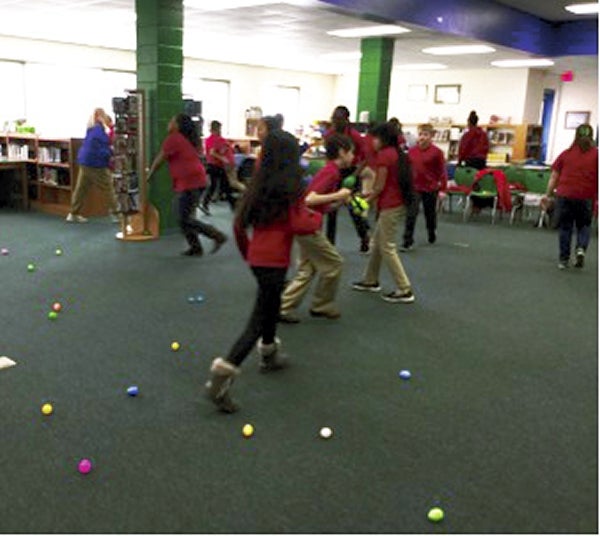How to survive: Sixth-grade science rotation makes early-release day more interesting
Published 12:00 am Thursday, March 23, 2017

- Students at North Rowan Middle School pretend to be cougars in search of food in an exercise designed to teach lessons in survival. Submitted photo
By Christy Brayton
SPENCER — How much food does a cougar need to survive a month in the wild?
What does an owl eat every day?
What sorts of animals and non-animals affect whether or not an animal or a person can survive in his habitat?
Every creature in the world, including humans, needs more than shelter or space to survive. They also need food, water and the ability to obtain that food.
On March 17, an early-release day scheduled for Rowan-Salisbury Schools, sixth-grade teachers at North Rowan Middle School organized a rotational classroom. In an Easter egg hunt simulation in the media center, the sixth-graders were cougars, foraging for enough food to survive for the month. They collected Easter eggs that represented food, color coded to represent their prey — from squirrels to deer — and what that prey provided in weight (kilograms). They then had to record and convert the data on their iPads.
Using the Goosechase app on their iPads, students in the reading garden collected information in a scavenger hunt designed to teach about abiotic, nonliving and biotic life as well as living factors in an environment that help or hinder survival.
In another room, students worked on dissecting owl pellets to see what prey owls ate to survive each day. Finally, in another room, the teachers created a pond to show students how a pond food web connects to all living creatures in that pond. All sixth-grade teachers worked together to plan this fun lesson, allowing students to learn about habitats and food security using science and math.
“This teaches students that the planet does have limits when it comes to how much resources are available to support animals and people,” said Michelle Stoelting, a sixth-grade science teacher.
The N.C. sixth-grade science curriculum offers many opportunities for engaging lessons, such as this science rotation day. Students in sixth grade learn about space exploration, plants and animals, ecosystems, volcanos and the ocean. They continue what they’ve learned in sixth grade in seventh- and eighth-grade science to prepare them for high school’s physical science classes.
“An effective classroom must be engaged in order to provide students their maximum learning capacity. It’s nice to break students out of their routines and to give them novel approaches to understand the curriculum,” says Jaime Pacilio, a sixth-grade science and math teacher.
Amanda Werth, Jaime Pacilio, Michelle Stoelting, Brad Hedrick, Miranda File and Laura Ritchie, along with media coordinator Christy Brayton, all led groups of students in this sixth-grade science learning activity.
“Working together as a sixth-grade teacher team to give our students their best learning opportunities is always our teachers’ priority,” said Amanda Werth, math teacher.
Christy Brayton is the media coordinator at North Rowan Middle School.




